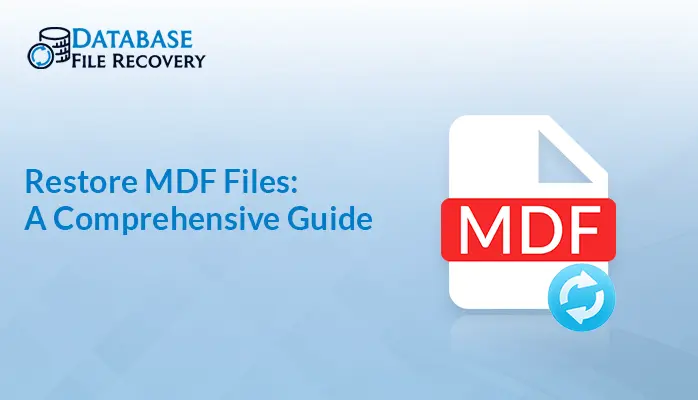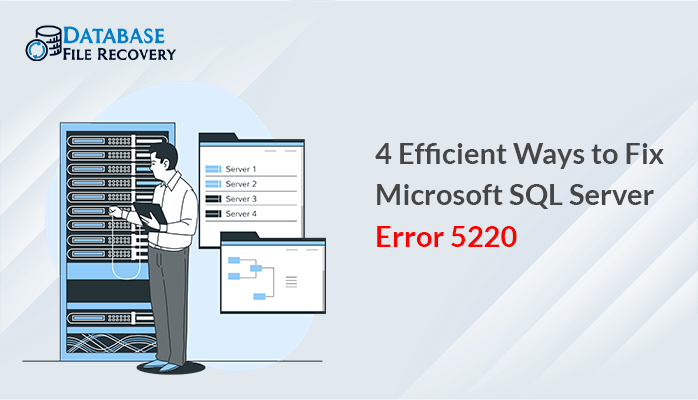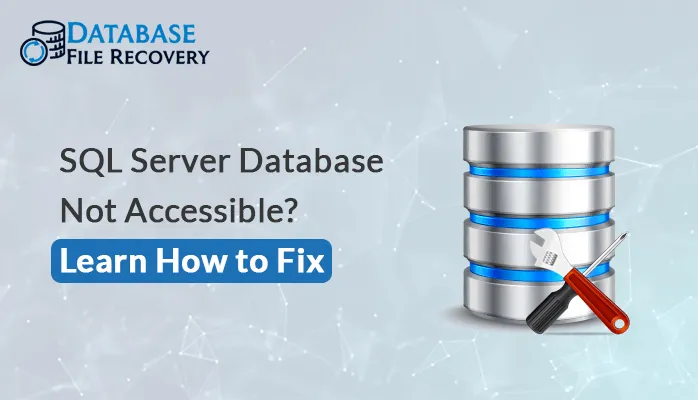-
Written By Pallavi
-
Updated on April 10th, 2020
Ways to repair SQL Database using DBCC CHECKDB Command in SQL Server
Being a database administrator, everybody knows about the importance of running database console command CHECKDB, i.e., DBCC CHECKDB, on regular intervals to check the physical and logical sincerity of the database objects, indexability, etc. So, let us move ahead and read in detail about dbcc checkdb command in SQL server.
This command in the SQL is used to restore or repair the database. Here in this blog, we will discuss the “method to repair SQL database using the DBCC CHECKDB command.
How does DBCC CHECKDB command work?
Before moving ahead, it is essential to understand some basic knowledge about the Database console command. The main use of DBCC CHECKDB is mainly to inspect the logical and physical integration of all the objects in the specific database. It executes the below-mentioned operations by using certain commands:
- Run DBCC CHECKALLOC ON THE Database.
- The DBCC CHECK CATALOG executes on the database.
- Validate or authenticate the contents of every indexed access in the database.
- Checks the link-level firmness among the metadata of tables, directory of file systems, and files while saving the max data or varbinary data in the file system by the use of FILESTREAM.
- Finally, check for the service broker data in the SQL database.
So now, we can understand that it is vital to execute the command mentioned above independently from DBCC CHECKDB to restore the SQL Server database.
How to repair SQL database by using DBCC CHECKDB command in SQL Server
DBCC CHECKDB command in SQL server can be used to restore the SQL database. For this, you need the Server Management studio in your system, i.e., SSMS. After that, you will require to run the following syntax in your system as:
[ ( database_name | database_id | 0
[ , NOINDEX
| , { REPAIR_ALLOW_DATA_LOSS | REPAIR_FAST | REPAIR_REBUILD } ]
) ]
[ WITH
{
[ ALL_ERRORMSGS ]
[ , EXTENDED_LOGICAL_CHECKS ]
[ , NO_INFOMSGS ]
[ , TABLOCK ]
[ , ESTIMATEONLY ]
[ , { PHYSICAL_ONLY | DATA_PURITY } ]
[ , MAXDOP = number_of_processors ]
}
]
]
Here in the above syntax, some terms in use are explained below:
database_name| database_id|0
This is the name or identity of the database that requires to execute DBCC CHECKDB repair command. If the name is not stated or stated a 0, then the command will execute on the ongoing database by default.
NOINDEX
NOINDEX is used so that it could thoroughly check for the non-clustered indexes for user tables must not be operated. This reduces the total running time. NOINDEX can not alter or modify the system tables, as integrity checks are being conducted on the system table indexes continuously.
REPAIR_ALLOW_DATA_LOSS | REPAIR_FAST | REPAIR_REBUILD
This syntax enables the DBCC CHECKDB to restore the errors founded. But these three terms are different from each other so let’s understand the differences:
REPAIR_ALLOW_DATA_LOSS
This term is used when the command DBCC CHECKDB is applied to restore the errors got. Sometimes Data loss occurs also.
REPAIR_FAST
This will not execute any restore operation, but it is used to maintain the syntax for backward affinity.
REPAIR_BUILD
If the user selects the REPAIR_BUILD option to restore SQL database error. You can execute the restore or repair operations, but there will be no data loss.REPAIR_BUILD involves two types of repair, i.e., quick fix and deep repair.
But somehow Microsoft recommends using the REPAIR option as the last spot. Let’s understand why Microsoft suggests so. When the DBCC CHECKDB founds the errors, the first attempt to take is restoring the database from the last backup. Hence, I will recommend you to use REPAIR_ALLOW_DATA_LOSS when there is no backup available.
Consequences/Limitations of Using the Database console command
- To perform SQL database recovery by using the controls as mentioned above, you need to have Microsoft SQL Server Management Studio in your system.
- Time-consuming and complicated process.
- Lengthy and requires technical expertise, so a person with a non-technical background has to face difficulties.
- The chances of data loss are very high.
Professional Methods to repair SQL Database
The DBCC CHECKDB is not the only option to restore SQL Database. Several professional utilities are available to recover SQL database from the suspect mode. One such tool is the SQL Recovery Tool. This tool is the most used and standalone solution to restore the SQL database. In addition to this, some prominent and practical features are below:
- This tool recovers file objects with table views, stored procedure, programmability, triggers, default, and functions promptly and accurately.
- MDF file recovery is there in dual-mode, i.e., standard mode and advance mode.
- Highly compatible with windows 10,8,7, vista 2003, XP, and 2000.
- Supported by SQL server version:2000, 2003, 2008, 2012, 2014, 2016, 2017, 2019.
Final verdict
In this post, I have tried to explain how to repair SQL database using DBCC CHECKDB command. The DBCC CHECKDB command in SQL Server is the first attempt that any user takes to resolve the SQL database recovery issue. It is good to go choice but not the only option to repair SQL database. Sometimes this method fails to perform recovery due to several reasons. Therefore, users can also go with the professional utility such as the SQL recovery tool that gives you an accurate and efficient solution, without moving into any hassle condition.
About The Author:
Pallavi is a content writer in the field of data recovery and email migration. She has a passion for creating engaging and thought-provoking content. With several years of experience in the field, she has developed a deep understanding of various writing styles and formats,
Related Post


